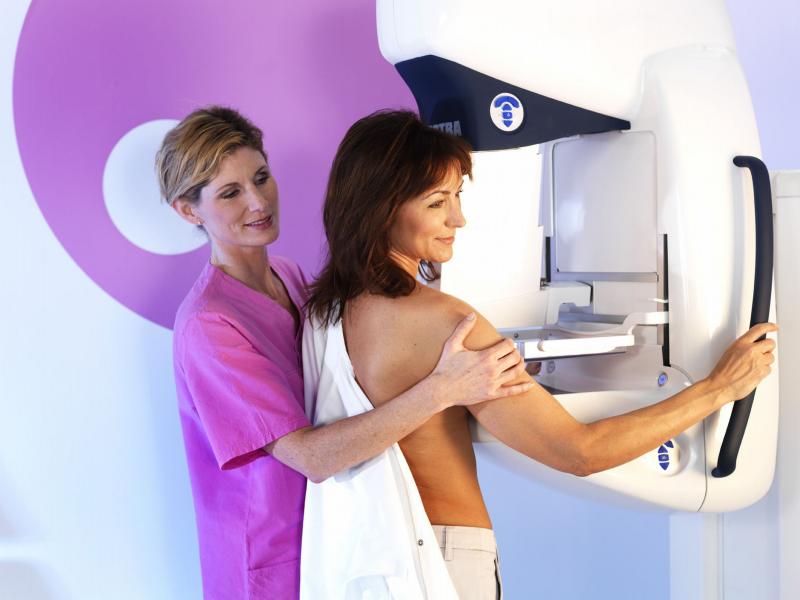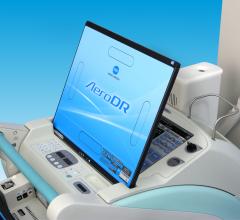Radiology departments have many different needs and face a wide variety of challenges that can impact their departments ...
Despite decades of progress in breast imaging, one challenge continues to test even the most skilled radiologists ...
ViewRay's MRIdian System, the world's first and only magnetic resonance imaging (MRI)-guided radiation therapy system, was featured during the 2015 annual meeting of the American Association of Physicists in Medicine (AAPM). This year's meeting was held July 12-16 in Anaheim, California.
To observe the brain in action, scientists and physicians use imaging techniques such as functional magnetic resonance imaging (fMRI) to observe physiological modifications to the cerebral region of activated neurons. Until now, it was believed that these differences were only due to modifications of the blood influx towards the cells. By using intrinsic optical signals (IOS) imaging, researchers from the University of Geneva (UNIGE), Switzerland, demonstrated that, contrary to what was thought, another physiological variation is involved: the activated neurons swell due to the massive entry of water. This discovery provides evidence that a much finer analysis of the functioning of the brain - and of its dysfunctions - is possible. These results are published in the journal Cell Reports.
Bayer Radiology’s Barbara Ruhland and Thom Kinst discuss how radiology departments can address the many different ...
A new study reveals that people with type 2 diabetes experienced negative changes in their ability to regulate blood flow in the brain, which was associated with lower cognitive skills and ability to perform daily activities. The study was published in the July 8, 2015, online issue of Neurology, the medical journal of the American Academy of Neurology.
CEIA USA Ltd. announced the availability of the CEIA Healthcare Detection Systems metal detection technology for magnetic resonance imaging (MRI) safety screening.
A study has found no increase in overall survival but a reduction in breast cancer recurrence when the lymph nodes receive additional radiation beyond the standard treatment of whole-breast irradiation after breast-conserving surgery.
eHealth Saskatchewan plays a vital role in providing IT services to patients, health care providers, and partners such ...
Researchers at the University of Virginia (UVA) Health System have demonstrated that automated volumetric fibroglandular breast density measurement tools are more precise than area-based methods. Results of the study, "Reliability of Automated Breast Density Measurements," recently featured in Radiology, suggest that with lower variability, volumetric breast density is well suited for inclusion in breast cancer risk models. The announcement was made at the Association for Medical Imaging Management (AHRA)'s 43rd annual meeting and exposition, July 19-22 in Las Vegas.
Angelina Jolie received widespread media attention in 2013 when she told the public that she'd tested positive for BRCA1, a gene associated with an increased risk of breast and ovarian cancers. Now research shows that this publicity did influence some women's intentions to seek out similar genetic testing.
Carestream Health entered the radiography/fluoroscopy (R/F) market with two systems that deliver high-quality, cost-effective imaging: the Carestream DRX-Excel and Carestream DRX-Excel Plus. These systems can enhance workflow and perform contrast exams using fluoroscopy that can be associated with a radiography image, in addition to specialized contrast procedures that record both fluoroscopy and radiography sequences and interventional procedures.
Lexmark announced that it has been named 2015 North American Company of the Year in Healthcare Content Management by Frost & Sullivan. Company of the Year is a Best Practices Award presented to companies that have demonstrated excellence in growth, innovation and leadership.
Fujifilm Medical Systems U.S.A. Inc. will highlight new digital radiography solutions at the Association for Medical Imaging Management (AHRA) annual meeting July 19 - 22 at The Venetian Hotel in Las Vegas.
According to a new study, most radiologist assistants (RAs) spend a significant amount of time each week performing patient management activities. Their weekly responsibilities include reviewing patients’ medical records, verifying the appropriateness of exams, and advocating for patient radiation safety and protection.
Konica Minolta Medical Imaging announced that the AeroDR wireless flat panel detector is now compliant with the Federal Information Processing Standard (FIPS) Publication 140-2 required by the Department of Defense and Veterans Affairs healthcare facilities. The FIPS 140-2 standard is an information technology security accreditation program for wireless hardware and software solutions used in U.S. government departments and industries — such as the VA hospitals — that collect, store, transfer and disseminate sensitive but unclassified information. The compliance covers the family of AeroDR flat panel detectors and the CS-7 control station.
Accuray Inc. announced that studies on the clinical use of the CyberKnife System continue to demonstrate the benefits of its precise, innovative treatment delivery techniques for stereotactic body radiation therapy (SBRT). More than 30 studies were presented during poster and oral sessions at the 57th Annual Meeting of the American Association of Physicists in Medicine (AAPM) held in Anaheim, California, July 12 – July 16, 2015.
















